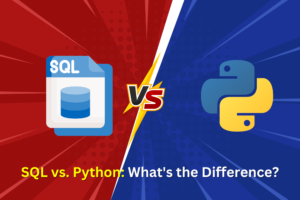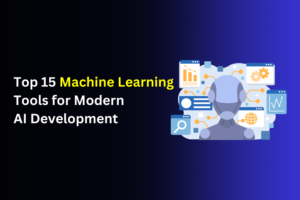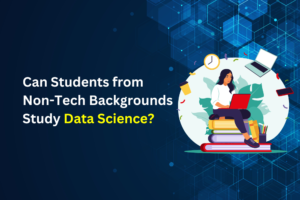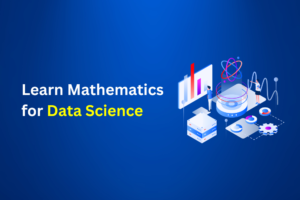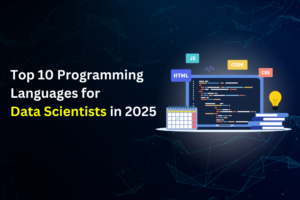Introduction
The field of Data Science is revolutionizing industries worldwide, with the demand for skilled professionals is increasing. If you’re looking to upskill in Data Science, mastering the right programming languages is key to finding the right career opportunities in this dynamic and rapidly evolving domain. This blog will explore the Top 10 Programming Languages for Data Scientists in 2025, breaking down their relevance, benefits, and the companies that are leveraging them. Whether you’re a student eager to learn or a professional planning to upskill, understanding these languages will give you the tools to succeed in the world of Data Science.
By the end of this article, you will have a clear idea of which programming languages are essential to learn and why they are important for making informed decisions based on data. We will also discuss how joining our Data Science course can help you learn these languages, setting you on the path to a rewarding career in the world of Data Science.
Table of Contents
- Python
- R
- SQL
- Java
- Scala
- C++
- JavaScript
- MATLAB
- SAS
- Go
1. Python
Python is a versatile and powerful programming language that has become the go-to choice for Data Science professionals worldwide. Known for its simple syntax, Python offers a broad range of libraries and tools that make it highly efficient for data manipulation, statistical analysis, and machine learning tasks.
Benefits of Learning Python:
• Simple to Learn: Python’s syntax is easy for beginners to understand.
• Comprehensive Libraries: NumPy, Pandas, and TensorFlow are just a few examples of libraries that make sophisticated data analysis and modeling easier.
• High Demand: Employers in a variety of industries greatly value Python.
• Adaptable: Python facilitates data analysis, automation, machine learning, and web development.
Companies Using Python:
- Spotify
- Netflix
- NASA
How Python is Shaping the Future:
Python is shaping the future of Data Science by making advanced analytics and AI accessible to professionals at all levels. With Python, Data Scientists can build predictive models, automate tasks, and analyze big data at scale, positioning companies to make more data-driven decisions.
2. R
Another strong language made especially for statistics and data analysis is R. It has been a staple in the Data Science community due to its advanced statistical capabilities and visualization tools.
Benefits of Learning R:
- Advanced Statistical Analysis: R excels in statistical computing and data modeling.
- Great Visualization Tools: Libraries like ggplot2 and Shiny help visualize complex data.
- Rich Ecosystem: R offers many packages for different kinds of analysis.
- Large Community: A robust community provides extensive resources for learning.
Companies Using R:
- Uber
- Walmart
- Pfizer
How R is Shaping the Future:
R’s specialization in data analysis and visualization has made it indispensable for businesses that rely heavily on statistical analysis. R is essential to turning raw data into useful insights and improving decision-making processes as businesses continue to collect more data.

3. SQL (Structured Query Language)Introduction:
Relational database management systems (RDBMS) use SQL, a domain-specific language, to manage and query structured data. While not traditionally seen as a “programming language” for Data Science, SQL remains a critical skill for data manipulation and retrieval.
Benefits of Learning SQL:
- Data Querying: Data retrieval and manipulation from databases need the use of data querying.
- Ubiquitous: Almost every company with data uses SQL in some capacity.
- Optimized for Data Operations: SQL can efficiently handle large datasets.
- Integration with Other Languages: SQL can be used alongside Python, R, and others to perform advanced analytics.
Companies Using SQL:
- Amazon
- Microsoft
- Oracle
- Salesforce
How SQL is Shaping the Future:
SQL helps Data Scientists interact with massive datasets housed in relational databases. By mastering SQL, Data Scientists can ensure efficient data extraction, which is a fundamental step in preparing data for analysis and modeling.
4. Java
A popular programming language, Java is renowned for its portability, speed, and scalability. Java is crucial to big data technologies like Apache Hadoop and Apache Spark, despite not being often linked to data science.
| Benefits of Learning Java | Companies Using Java | How Java is Shaping the Future |
| Scalable and Efficient for Large Datasets | Supports the growth of big data environments. | |
| Integration with Big Data Tools (Hadoop, Spark) | Airbnb | Facilitates real-time data processing and large-scale analytics. |
| Speed and Performance | Handles large volumes of data efficiently. | |
| Cross-Platform |
5. Scala
The object-oriented and functional programming paradigms are combined in Scala, a hybrid programming language. It is used extensively in big data environments, particularly for data processing on Apache Spark.
Benefits of Learning Scala:
- Java compatibility: Scala is compatible with Java since it runs on the Java Virtual Machine (JVM).
- Big Data Integration: Scala and Apache Spark are frequently used together to handle massive amounts of data.
- Concise Syntax: Scala is more concise than Java while maintaining performance.
Companies Using Scala:
- Netflix
- Airbnb
- eBay
How Scala is Shaping the Future:
Scala plays a crucial role in the big data ecosystem, particularly for real-time data processing. Its combination of performance and flexibility makes it a key tool for handling massive amounts of data in distributed environments.
6. C++
C++ is a high-performance language known for its ability to handle system-level programming and computation-heavy tasks. Although not a primary language for Data Science, it’s useful in specific contexts such as algorithm development and simulations.
Benefits of Learning C++:
- High Performance: Applications that require high performance are best suited for C++.
- Memory Management: Provides fine-grained control over memory, crucial for large-scale operations.
- Real-time Processing: Useful for applications requiring real-time analytics.
Companies Using C++:
- Microsoft
- Adobe
- Amazon
- NASA
How C++ is Shaping the Future:
C++ continues to drive advancements in high-performance computing, including simulations and the development of complex algorithms that power data analytics and machine learning models.

7. JavaScript
Although JavaScript is mostly recognized as a language for web development, it also offers strong data science capabilities, especially in front-end analytics and data visualization.
Benefits of Learning JavaScript:
- Data Visualization: JavaScript libraries like D3.js and Chart.js enable interactive data visualizations.
- Web Integration: Allows integration of data analytics into web applications.
- Popularity: JavaScript is extensively used and supported, making it a dominating language on the web.
Companies Using JavaScript:
- Netflix
- Airbnb
How JavaScript is Shaping the Future:
JavaScript’s role in the web ecosystem is expanding into data visualization, enabling businesses to build intuitive, interactive dashboards for real-time data insights.
8. MATLAB
A popular high-level language for numerical and matrix calculations, MATLAB is used in both academia and business for data analysis, machine learning, and algorithm creation.
Benefits of Learning MATLAB:
- Mathematical Operations: Excellent for matrix manipulations and numerical computations.
- Toolboxes: MATLAB offers specialized toolboxes for machine learning, data analysis, and signal processing.
- Academic Use: It is widely used in academic research and engineering applications.
Companies Using MATLAB:
- General Electric
- Siemens
- Toyota
- NASA
- Lockheed Martin
How MATLAB is Shaping the Future:
MATLAB plays a key role in engineering, simulation, and algorithm development, providing data scientists with powerful tools for mathematical and scientific data analysis.
9. SAS
A software package called SAS (Statistical Analysis System) is used for predictive modeling, multivariate analysis, and advanced analytics. It has been a trusted tool for data scientists working with complex datasets.
Benefits of Learning SAS:
- Advanced Analytics: SAS is renowned for its strong predictive analytics and statistical analytical skills.
- Data Management: SAS excels at managing large datasets.
- Industry Standard: SAS is used for data analysis in many fields, most notably healthcare and finance.
Companies Using SAS:
- Wells Fargo
- Citi
- Pfizer
- Johnson & Johnson
- Boeing
How SAS is Shaping the Future:
SAS continues to be instrumental in the healthcare, financial, and pharmaceutical industries, helping organizations analyze large datasets to make informed business decisions.
10. Go
Google developed the open-source programming language known as Go (or Golang). Go is becoming more and more popular in backend programming and data engineering because of its ease of use and effectiveness.
| Benefits of Learning Go | Companies Using Go | How Go is Shaping the Future |
| Fast Execution | Facilitates high-speed data processing and backend applications. | |
| Concurrency for Data Processing | Uber | Enables efficient handling of large-scale data tasks. |
| Simple Syntax | Dropbox | Optimizes data pipeline and backend development. |
| Netflix |
Conclusion
By learning the appropriate programming languages, you may secure your position at the vanguard of this fascinating sector, which is still developing at an incredible rate in 2025. Whether you choose Python, R, SQL, or any of the other languages listed, each offers distinct advantages that can propel your career forward.
Enrolling in our Data Science course will provide you with the practical skills and hands-on experience needed to master these languages and tackle real-world data challenges. Don’t pass up the chance to develop a solid foundation in the languages that will drive data science in the future. Get started on your data science journey now and give yourself the tools that leading businesses are loo


